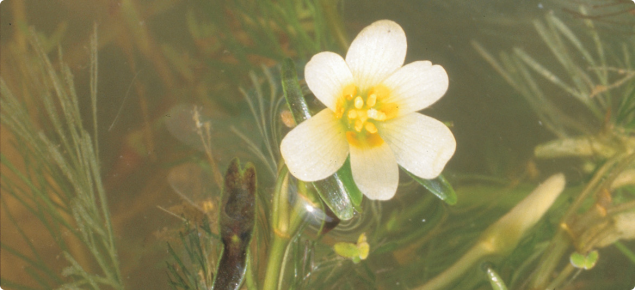Form: aquatic
Status: not present in WA
Native to North and South America, cabomba was originally introduced to Australia as an aquarium plant. A mostly submerged perennial herb, usually rooted in mud at bottom of water area, reproducing by stem fragments and possibly by seed. Cabomba is a Weed of National Significance (WoNS).
Appearance
Stems: Slender to two metres or more, much branched near base, covered with a thin gelatinous coating.
Leaves: Submerged leaves are opposite or arranged in whorls, finely divided several times into narrow segments to form a fan shape three to six centimetres across, covered with a gelatinous coating.
Flowers: White or cream often with a pink tinge at the tip and two yellow spots at the base of each petal, to two centimetres diameter. Flowers on the water surface.
Fruit: Of two to four somewhat bottle-shaped leathery segments each containing three seeds.
Seeds: two to three millimetres long, one millimetre wide.
Agricultural and economic impact
A water weed that grows in still or slow-moving freshwater, in ponds, lakes, dams, channels and quiet streams. Cabomba interferes with irrigation infraestructure blocking irrigation channels. Infestations displace native plants and animals, affect water quality, and impede recreational water users.
Declared pest category
The Western Australian Organism List (WAOL) contains information on the area(s) in which this pest is declared and the control and keeping categories to which it has been assigned in Western Australia (WA). Search for cabomba in the WAOL using the scientific name Cabomba caroliniana.
Requirements for land owners/occupiers and other persons
Requirements for land owners/occupiers and other persons if this pest is found can be sourced through the declared plant requirements link.
Search > detect > report
| MyPestGuide™ Reporter | Pest and Disease Information Service (PaDIS) |
Control method
Control methods for this declared plant can be found through the cabomba control link.

